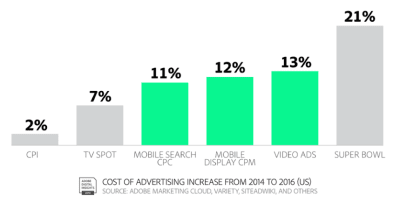
How To Turn Your Users Into Advocates
How To Turn Your Users Into Advocates
Nick Babich
(This article is kindly sponsored by Adobe.) As businesses become more consumer-oriented, competition grows fiercer. Thousands of companies worldwide are struggling each day to gain more market share and to win over new consumers. A significant number of companies concentrate only on acquiring new customers — they allocate enormous marketing budgets trying to strengthen their customer base. But acquiring new customers only becomes harder and more expensive. According to the 2017 Digital Advertising Report by Adobe, ad costs are seeing growth five times faster than US inflation rates.

In an attempt to find new customers, companies often forget to think of ways to engage with existing users. However, acquiring a new customer is anywhere from 5 to 25 times more expensive than retaining an existing one.
To succeed in the modern market, companies need to do more than produce an excellent product or provide reliable service: They need to turn their faithful users into advocates.
In this article, I’m going to discuss:
- who are product advocates,
- actionable ways to turn your customers into brand advocates,
- what to consider when creating a strategy for advocacy.
Who Are Product Advocates?
Brand advocates are people who feel so positively about a brand that they want to recommend it to others. They’re often called volunteer marketers because they pass on positive word-of-mouth messages about the brand to other people (both offline and online). Advocates do it organically — money is not the primary reason why they promote a brand or product; they promote it because they truly believe in the brand.
Why Advocacy Is Great
Who sells your products or services? You might think it the sole responsibility of the sales and marketing team. Yes, for a long time, sales and marketing was the team responsible for product growth, but the situation has changed. Your customers have quickly become the most critical people to sell what you’re offering. More specifically, your customers have become keen advocates for your product or service. Advocates can be a key part of growing your customer base:
- Organic promotion
Brand advocacy is the modern form of traditional word-of-mouth marketing. And word of mouth about a product or service is one of the most powerful forms of advertising; when regular people recommend a product, their message carries more weight than a paid advertisement. According to a McKinsey study, word of mouth can generate more than double the sales of paid advertising. - Authentic reviews and testimonials
Social proof plays a vital part in the process of product selection. Reading reviews and testimonials is the first step potential users make when researching a product; reviews and testimonials play a role in the wisdom of the crowd. And advocates can be excellent sources of reviews and testimonials. According to Google, 19% of brand advocates share their experiences online in their networks — twice as many as non-brand advocates. - Brand awareness
Advocates use the power of social channels to amplify a brand’s exposure. As a result, they can reach out to people you might not have considered. - Valuable customer feedback loops
Advocates can provide valuable customer insights. Their insights can help you formulate more focused, customer-centric product road maps.
Loyalty And Advocacy Are Not The Same Thing
Many people confuse loyalists and brand advocates. Brand loyalists and advocates aren’t the same groups of customers. Loyal customers are people who stay with your brand. For example, if you run an e-commerce store, loyal customers will be your return buyers. But they might not actively promote your brand to others (i.e. they might not be comfortable with sharing information about your brand publicly).
Advocates, on the other hand, are people who not only are loyal to your brand, but also proactively talk up and advocate for your company to their own networks. The word “proactive” is key here. Advocates invest in the success of your brand heavily. The goal is to turn brand loyalists into brand advocates.
Who Has The Potential To Become A Brand Advocate?
Your existing customers are the most apparent advocates for your brand. Let’s define the groups of existing users who likely to be interested in a brand advocacy program:
- Promoters
Promoters are people who participate in an NPS survey, a single-question survey that sounds like, “On a scale of 0 to 10, how likely are you to recommend us to your friends, family, or colleagues?”, and who answers 9 or 10. - Referrers
These are existing customers who refer new users to your product. - Repeat visitors
Repeat visitors are highly engaged and interested in the content you provide. - Social sharers
These are people who share your content on social media on a regular basis. - Critics
Critics leave feedback about your product or service.
However, your customers are not your only advocates. The best brand advocates are people who work with you: your employees. Communications marketing firm Edelman found that 52% of consumers view employees as very credible sources of information about a brand.
How To Encourage Advocacy
Getting customers to advocate for a brand is a lot different from getting them to buy products or services. Users don’t become advocates without reason. To acquire a brand ambassador, companies need to create the conditions that generate not only happy customers, but true customer advocates.
Don’t Try To Force It
Pushing people towards a particular type of action typically results in them doing the opposite. Don’t try to force advocacy; it should be completely natural.
Create A Delightful UX
Designing for the user experience has a lot more to it than making a product usable. It’s also important to generate a certain positive emotional effect while people are using a product. After all, user experience is about how users feel when they interact with a product. As humans, we establish some sort of an emotional connection with all of the products we use. It’s possible to establish a deeper connection with a product by adding elements that generate positive emotions at multiple points along that journey.
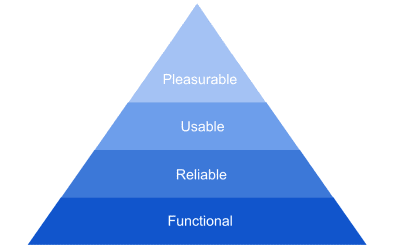
The reward for brands that connect with customers’ emotions in a positive way can be substantial. People love to talk about products that make them happy.
Duolingo is an excellent example of incorporating delight in UX. What makes Duolingo thrive is its smooth functionality wrapped in a friendly design with elements of gamification. Each lesson is presented as a challenge to the user. When users accomplish a task, Duolingo celebrates this progress with the users by rewarding them with a badge. By presenting the learning process as a challenge, the service creates a sense of development and accomplishment. The latter has a significant impact on delight.

Focus On Building Trust
Advocacy is always a risky business. When discussing a company, advocates are putting their reputation on the line. They know that if something goes wrong, people will blame them for it. But one thing can alleviate those fears: trust. The more they trust you, the more easily they will recommend your product.
Below are a few things that play a significant role in building trust.
Stand By What You Offer
Deliver what you promise, and promptly solve problems when something goes wrong. That’s the obvious starting point, but you’d be surprised at how many fail to execute well on this simple principle.
Casper, an e-commerce company that sells sleep products online, is an excellent example of a company that exemplifies trust. Ordering a mattress on the Internet isn’t a simple thing. A customer might try a product and find that it’s not good for them. The company understands this and offers an extended trial period (customers can test a product for 100 nights) and an incredibly lenient return policy. By making returns as simple as possible, Casper makes the process of ordering a mattress as comfortable as possible. Casper not only stands by its products, but also trusts its customers to be honest when requesting a refund.
Make It Easy To Reach You
When customers interact with a brand, they expect to have a dialog, not a monologue. They want you to listen to them and demonstrate that you care about them as individuals. This is especially important when users face problems. Users should be able to reach a company through whichever channel is most convenient to them at the time. Whether they prefer face-to-face communication, email, a phone call or a message in a social network, make sure you’re available by all those means.
Ask For Feedback
Asking users for feedback not only is one of the best ways to gain insight into your business, but is also a great way to build relationships. When you ask users for feedback, they understand that you actually care about them and want to make their experience better.
However, the way you ask for feedback plays a vital role in how users react to it. Generic surveys with questions like, “Are you happy with our service? Answer yes or no” won’t deliver many insights. You need to research users problems first, get to know what is bothering them, and only after that ask questions that your users will be happy to answer.
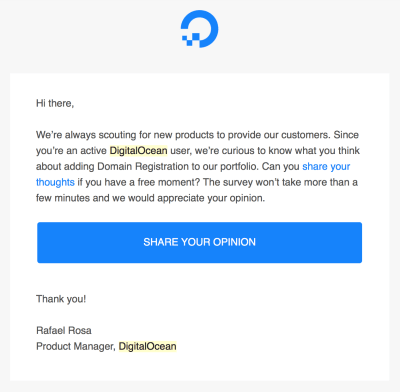
Encourage Your Customers To Talk About You
Despite the digital world constantly changing, one trend remains the same: When it comes to evaluating a new product or service, potential clients trust the advice and expertise of existing clients. To build trust, you need to encourage users to talk about you. Here are a few things to remember when asking users for a review:
- Find the right time to ask for a review. The request for a review should be a natural part of the customer journey.
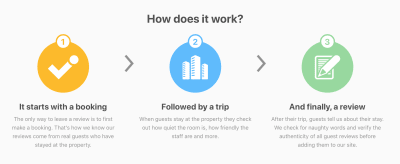
- Focus on quality, not quantity. Stay away from reviews and testimonials that praise the product. “Amazing product, highly recommended” doesn’t say much to potential customers. Prioritize testimonials that have context and that tell a story. This testimonial from Amazon illustrates exactly what I mean:
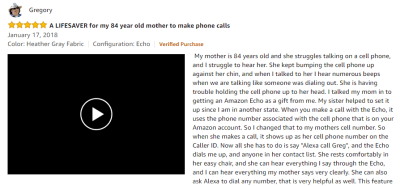
Offer A Loyalty Program
A loyalty program is a tried-and-true technique to show users your gratitude. As mentioned above, loyalty and advocacy aren’t the same thing. Still, a loyalty program can be used to increase the number of brand advocates:
- Beat negative experience.
A loyalty program might come in handy when users face a problem and complain about it. Of course, it’s essential to respond to the user request and provide a solution to the problem as fast as you can. But once the issue has been resolved, you can offer the customer loyalty points as an apology. This might help you to win back frustrated users, and maybe they can even advocate for your brand. - Encourage social activity.
Motivate users to participate in social activities. For example, reward users by awarding loyalty points every time they tweet or post to Facebook, write a review, or refer their friends.
Offer A Referral Program
Running a referral program is a great way to encourage existing users to share information about your business. A successful referral program can help you achieve two key goals:
- acquire new customers,
- turn existing customers into brand advocates.
Moreover, studies confirm that referred customers are more valuable than customers acquired by other methods; they tend to yield higher profit margins and stay longer (they have a 16% higher lifetime value than non-referred customers), resulting in an overall higher customer lifetime value.
The critical point with a referral strategy is to find out the right incentive to make users spread the word about your product. Dropbox’s referral program is possibly one of the most famous cases of referral marketing done right. The service grew 3900% in 15 months with a simple referral program. When existing Dropbox users referred Dropbox to someone and the person signed up, both got extra free space. Apparently, Dropbox’s tremendous rise is not all due to the referral program; the service provides an excellent user experience, and the team continually improves its product. But the referral program was a great accelerator of the process of promotion.
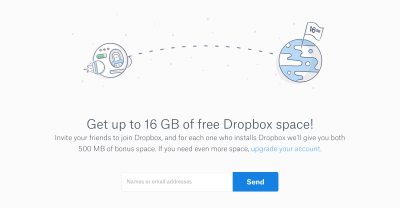
Uber is an excellent example of how a referral program baked into the service from day one can boost adoption. When Uber launched, it was quite a revolutionary service that brought the sharing economy to the transportation industry. People had to adapt to this new format of ridesharing — many potential users had doubts that stopped them from trying the new experience. The referral program was an excellent tool to alleviate fears. The incentive for participation in the program is straightforward: The service offers a free ride to both the referrer and the new rider upon a successful referral. A free ride is an excellent opportunity to get to know the service. This way, Uber gives new customers the perfect introduction to the service.
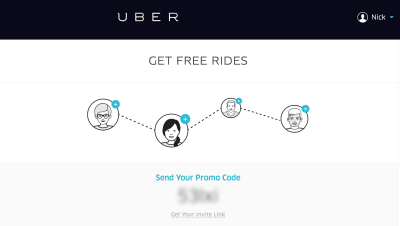
Both Dropbox and Uber integrated the referral program very naturally into the product experience. For Dropbox users, the referral program is presented as the final step of the onboarding process — at the point when users already know what benefits the product brings to them and when they’ll be most likely to participate in the program. As for Uber, the referral program has its own option in app’s main menu.
Personalize Customer Experiences
Personalization allows brands to build deeper connections with their customers. It feels great when a product offers an experience that feels tailored especially to us. A personalized experience is what often drives a customer to say, “This is the brand for me.”
It’s possible to make the experience more personal by gathering information on customers and using it to deliver more relevant content. For example, you could have an intuitive interface that adjusts exactly the way the user expects. Netflix is an excellent example of earning loyalty based on providing a personalized experience. The service offers content suggestions based on the user’s viewing history. Netflix also notifies users when new seasons of their favorite TV shows are released.

Leverage The Power Of Social Media
The power of word of mouth created by brand advocates is amplified through social media. In fact, if there’s one place your company should look for brand advocates, it’s on your social media channels. Today, 70% of Americans use social media channels to engage with friends, family and the people they know. Thus, it’s essential to practice social listening — listen to what your current customers and advocates are saying about your brand — and respond to their comments accordingly.
Choose The Social Networks Most Effective To Your Business
It’s extremely important to know where your audience lives on social media and where potential advocates could have the most influence.
Carefully Choose Content To Publish
Before posting anything on social media, ask yourself two simple questions, “Does it benefit our company?” and “Does it meet our audience’s needs?” Ideally, you should post content that both reflects your business’ goals and satisfies the needs of your target audience.
Respond To User Feedback
Recognizing and responding to positive feedback is particularly important over social media. Reward the people who stand out in your community. If you have a customer who wants to engage with you, engage with them. Give them as much love as they’re giving you.

Share User-Generated Content
One of the best ways to push customer advocacy is through user-generated content.
It’s great for brands because one piece of user-generated content can reach thousands of people within hours. And it’s great for users: Being mentioned or having content shared by a brand is really exciting for many consumers.
Airbnb is an excellent example of how user-generated content can be a vital part of a brand’s content. In the company’s Instagram account, Airbnb shares stunning photos captured by its customers. The photos include exotic locations, and this kind of content is highly attractive to prospective customers.

Solve User Problems
When users have a problem with a product, they often post questions or complaints on social networks in the hope of getting a quick response. It’s tremendously important to address every concern users have about your brand. By solving their problems, you clearly demonstrate that your brand is genuinely addressing customer concerns. Just imagine the effect when you resolve an issue on Twitter, Facebook or Instagram, and the happy user shares the whole conversation with their friends and family. The benefits will be priceless. Thus, the more you interact with people and solve their issues on social media, the more value you will provide to them, and the more they will like you.
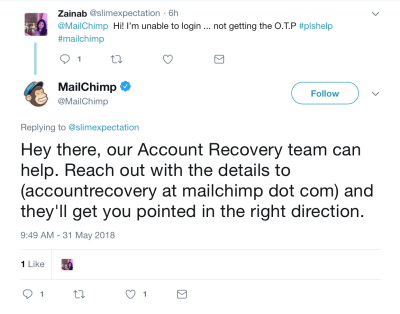
Encourage Your Followers To Share Content
Social media are great places to run promotional campaigns. Next time you run a promotion, ask your followers to share special moments using the hash tag assigned to the campaign. Track the hash tag, and choose the most inspiring contributions. This type of sharing has three significant benefits:
- It builds brand loyalty.
- It brings a community together.
- It helps you create great content relevant to your brand.

Provide Social Reward
Monitor your social media channels to identify people who are frequently mentioning your brand, and reward them with personal messages or gifts.

Make Social Engagement A Natural Part Of The User Journey
Encourage your users to share their achievements in the app on social media. Every once in a while, give users a shout out by sharing their posts on your page as well. Such encouragement can play a key role in making other people do the same. Just make sure the spotlight is on their accomplishments, not your product.
Runtastic (an app that tracks the number of kilometers a user runs every day) is a great example. The app encourages users to share their run with friends on social networks. Users love to share their progress with their network because it makes them look good.

Boost Employee Advocacy
Your employees can help you amplify the brand’s message. According to Weber Shandwick research, 30% of employees are deeply engaged and have a high potential to be employer advocates. Moreover, the leads generated by an employee through social networking convert 7 times more often than other leads.
Your employees know the product inside out; they are capable of providing support and answering detailed questions about the product. It’s possible to boost employee advocacy by following a few simple rules:
- Train your employees on social sharing activities. Organize seminars to educate your employees on the importance of social sharing and how they can participate in this activity.
- Incentivize participation in social activities. Provide benefits to frequent sharers and referrers, and acknowledge them in company events.
- Practice co-creating content with your employees. Give your employees more opportunities to be involved with your brand by sharing their own messages that reinforce business goals.
- Help them build their personal brand. When your employees gain enough credibility to market your company, the impact of promotion will be much higher.
Help Customers Reach Their Professional Goals
Every brand should help customers to become more experienced in what they do. One way to help your customers with their professional advancement is to provide educational opportunities. Today, many big companies are focused on creating content that will help their users. For example, Adobe offers a magnificent suite of products for designers, but it isn’t only the products that make the company recognizable; it’s the content it publishes. Adobe runs a blog that offers free in-depth educational content that helps thousands of designers create better products.
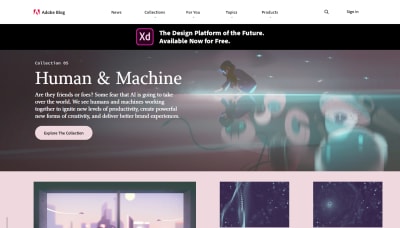
Create “Wow” Moments For Your Users
One of the most effective ways to make your users happy (and turn them into brand advocates) is to surprise them — for example, with an unexpected gift. A gift doesn’t mean something expensive. It could be as simple as a handwritten note. Most users would be delighted to receive such a gift because they understand that it takes time to write a personal message. Give your customers such a surprise and they’ll want to talk about it and about, more importantly, its sender.
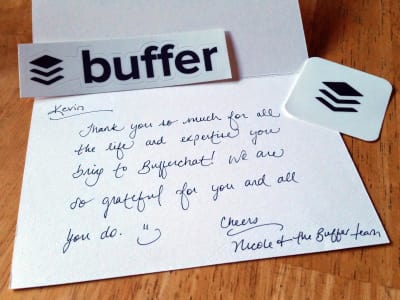
Things To Remember When Creating A Brand Advocacy Program
We’ve just reviewed a great list of methods to boost brand advocacy. But which methods should be applied in your case? Unfortunately, when it comes to creating a brand advocacy program, there’s no silver bullet that turns customers into enthusiastic advocates. Each company has its own unique set of requirements, and it’s impossible to provide a one-size-fits-all solution. But it is still possible to provide a few general recommendations on how to create an advocacy program.
Set A Goal
Without clear goals, your chances to engage advocates decrease significantly. Before you get started, know what you want to achieve from your advocate marketing program. What do you want advocates to do?
Choose advocacy goals that align with your overall business objectives. For example, if your top business goal is to increase conversions, then one of your top advocacy goals could be to get more high-quality referrals.
Here are a few common goals:
- Higher brand engagement
The number of comments, likes and mentions on your channels is a signifier of success. - Higher conversion rates
Get more high-quality referrals that result in increased sales. - Better brand awareness
By tracking keywords associated with your brand, you’ll know how often people mention your brand and in what context.
Quick tip: Use the S.M.A.R.T. goal-setting program to set the most effective goals possible. The goals you define should be specific, measurable, attainable, relevant and timely.
Measure The Outcome
When it comes to measuring the outcome of an advocacy program, many teams use NPS (Net Promoter Score) as a key metric. NPS is computed by asking users to answer, “How likely are you to recommend this product to a friend or relative? Rate it on a scale from 0 to 10.” The answers are then grouped into three categories:
- Detractors: responses of 0 to 6, which indicate dissatisfaction.
- Passives: responses of 7 or 8, which indicate moderate satisfaction.
- Promoters: responses of 9 or 10, which indicate high satisfaction and a strong likelihood of recommendation.
The NPS is then calculated by subtracting the percentage of detractors from the percentage of promoters. The NPS can range from -100% (only detractors) to +100% (only promoters).

While NPS is an excellent base level for measuring customer satisfaction and loyalty, don’t use NPS as a key performance indicator. Jared Spool provides a few valid arguments on why NPS can be considered harmful to business. Figure out the more reliable and actionable ways to measure how customers feel about your brand and its offerings.
Also, when it comes to evaluating your advocacy program, focus on measuring retention, not conversion. Customer retention refers to a business’ ability to keep a customer over a specified period of time. Your retention rate can tell you a lot about your user base.
Here are three metrics that can help you measure it:
- Customer retention rate
The customer retention rate indicates what percentage of customers have stayed with you over a given period of time. While there’s no standard formula for calculating a customer retention rate, Jeff Haden shares a simple way to measure it. Customer retention rate = ((CE – CN) / CS)) x 100, where CE is the number of customers at the end of a period, CN is the number of new customers acquired during a period of time, and CS is the number of customers at the start of a period of time. A business with a low customer retention rate is like a bucket of water with holes in it. - Customer lifetime value
The customer lifetime value is a projection of revenue a business can expect from a customer relationship. Knowing the lifetime value of a customer will help you determine how much money you can spend on customer acquisition; it also enables you to calculate your return on investment (ROI). A customer’s acquisition costs being higher than their lifetime value will often cause problems.
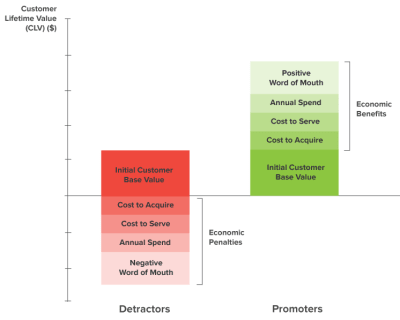
- Referral rate
If a business runs a referral program, customer referrals are the ultimate proof of your advocacy program. Referral rate = number of coupons redeemed / number of coupons issued. If any user has a personal coupon they can share with friends and family, the formula can be even more straightforward: referral rate = number of coupons redeemed / total number of users.
Conclusion
Think of brand advocates as your new sales team. They have tremendous brand value, they drive awareness, and they are capable of persuading people to consider your product. By focusing your efforts on developing brand advocates, you will see an increase in your company’s growth.
This article is part of the UX design series sponsored by Adobe. Adobe XD tool is made for a fast and fluid UX design process, as it lets you go from idea to prototype faster. Design, prototype and share — all in one app. You can check out more inspiring projects created with Adobe XD on Behance, and also sign up for the Adobe experience design newsletter to stay updated and informed on the latest trends and insights for UX/UI design.
 (ms, al, il)
(ms, al, il)
Articles on Smashing Magazine — For Web Designers And Developers
